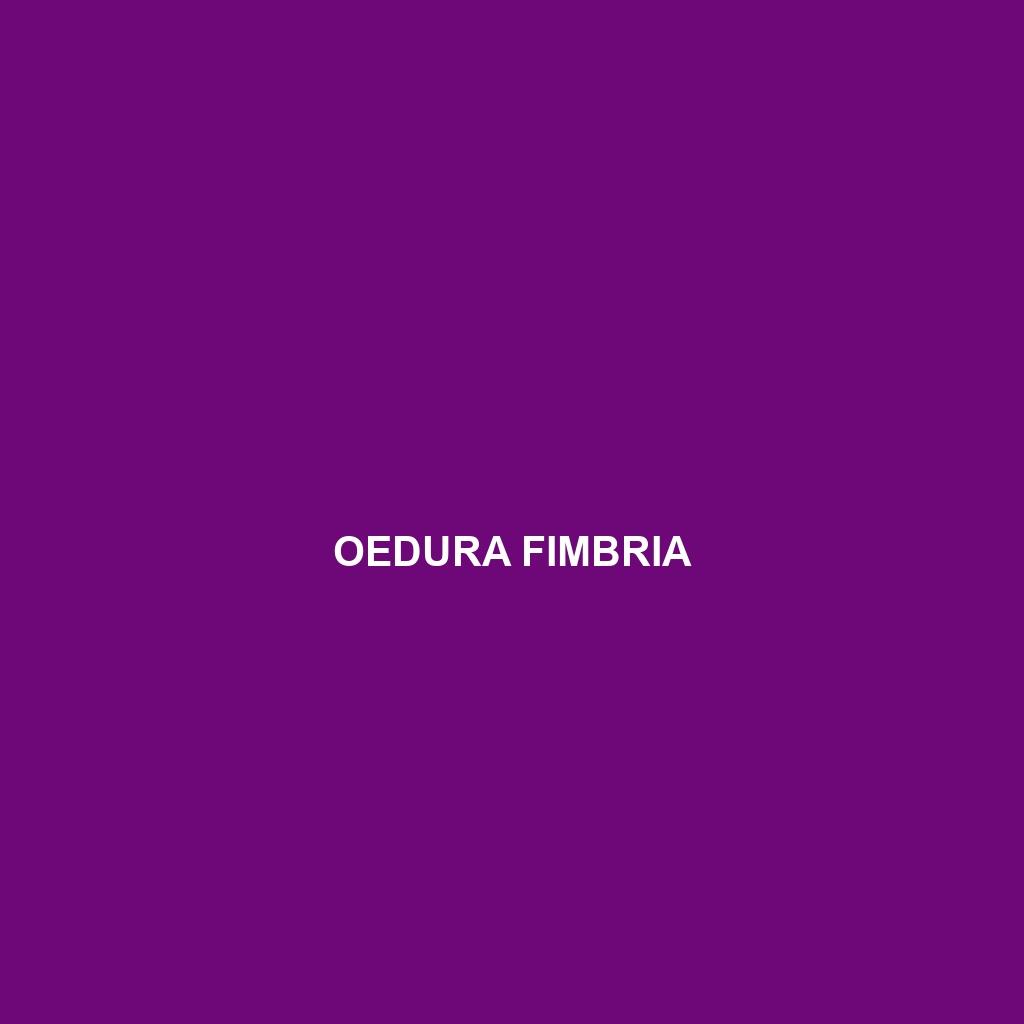Common Name
Oedura fimbria
Scientific Name
Oedura fimbria
Habitat
The Oedura fimbria, commonly known as the fringed gecko, is primarily found in the coastal regions and areas of northeastern Australia. Its preferred habitats include subtropical and tropical rainforests, open woodlands, and savannas. These geckos thrive in environments with ample cover, such as leaf litter and dense foliage, as well as rocky outcrops, which provide them protection from predators. The humid and warm climate of these regions offers an ideal setting for the Oedura fimbria to flourish, as it relies on these environmental conditions for both thermoregulation and breeding.
Physical Characteristics
The Oedura fimbria is a medium-sized gecko, typically measuring between 10 to 20 cm in length. This species is characterized by its distinctive coloration, which ranges from a muted brown to greyish hues, adorned with darker bands and spots that provide excellent camouflage against tree bark and rocky surfaces. One of its unique features is the fringed or serrated scales along its body and tail, which enhance its ability to cling to surfaces and assist in thermoregulation. The gecko’s large eyes, which are well-adapted for low-light conditions, reflect its primarily nocturnal lifestyle.
Behavior
The Oedura fimbria exhibits fascinating behaviors, particularly its nocturnal patterns. This species is most active during the night, foraging for food and engaging in social interactions under the cover of darkness. It has been observed displaying territorial behaviors, particularly during mating season, where males will engage in head-bobbing displays to assert dominance. Mating rituals can be quite elaborate, often involving complex courtship dances where males will utilize their vibrant patterns to attract females. During the day, these geckos often seek shelter in crevices or under loose bark, remaining inactive and conserving energy.
Diet
As insectivores, Oedura fimbria primarily feeds on a variety of insects and invertebrates, including crickets, spiders, and moths. Their feeding patterns are influenced by their nocturnal behaviors, utilizing their keen eyesight and hunting skills to catch prey in low-light conditions. Occasionally, they may consume small fruits or nectar, which indicates a slight omnivorous tendency. The foraging habits of the fringed gecko reflect a key adaptation to its environment, allowing it to thrive in both lush forest settings and open woodland areas.
Reproduction
The reproductive cycle of Oedura fimbria typically aligns with seasonal changes, with mating occurring during the warmer months. Females lay clutches of one to two eggs in hidden areas such as leaf litter or under rocks, ensuring protection from predators. The incubation period for these eggs usually lasts around 60 days, after which hatchlings emerge, measuring about 5 cm in length. Parent involvement is minimal post-hatching, but the eggs are often placed in environments conducive to the hatchlings’ survival. The young geckos are independent from birth and begin to forage almost immediately.
Conservation Status
Currently, the Oedura fimbria is listed as “Least Concern” by the International Union for Conservation of Nature (IUCN). However, habitat destruction due to urban development and climate change poses potential threats to local populations. Conservation efforts focusing on habitat preservation are essential for maintaining healthy populations of this species. Local conservation organizations are actively working to monitor habitats and implement measures to mitigate the impact of environmental changes.
Interesting Facts
The Oedura fimbria possesses several intriguing adaptations, including its ability to drop its tail when threatened, a common survival mechanism among geckos. This defensive tactic allows the gecko to escape predation while the detached tail continues to wriggle, distracting the predator. Additionally, members of this species exhibit a remarkable ability to change their coloration slightly based on their environment, enhancing their camouflage further against potential threats.
